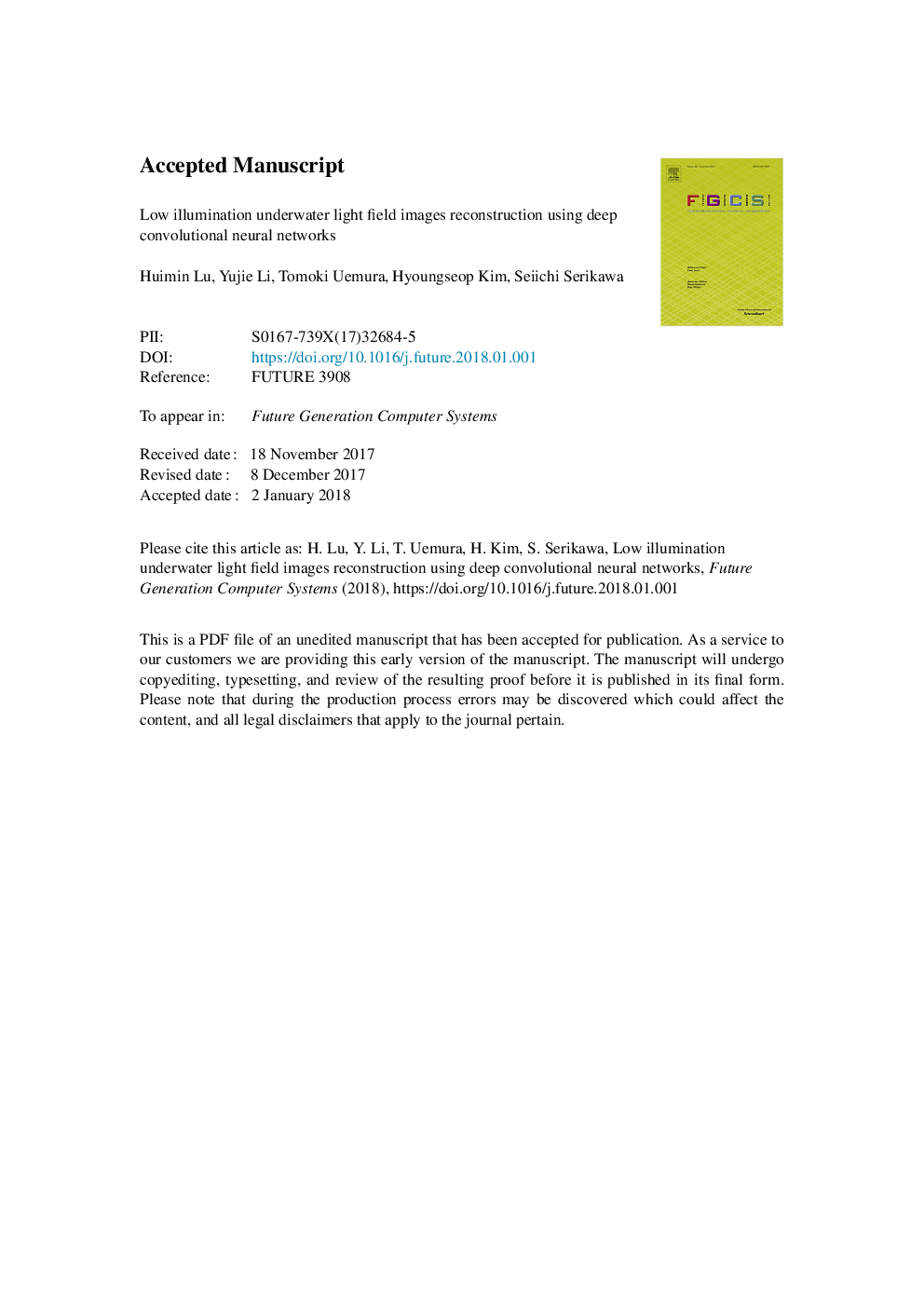| Article ID | Journal | Published Year | Pages | File Type |
|---|---|---|---|---|
| 6873195 | Future Generation Computer Systems | 2018 | 20 Pages |
Abstract
Underwater optical images are usually influenced by low lighting, high turbidity scattering and wavelength absorption. To solve these issues, a great deal of work has been performed to improve the quality of underwater images. Most of them use the high-intensity LEDs for lighting to obtain the high contrast images. However, in high turbidity water, high-intensity LEDs cause strong scattering and absorption. In this paper, we propose a light field imaging approach for solving underwater imaging problems in a low-intensity light environment. As a solution, we tackle the problem of de-scattering from light field images by using deep convolutional neural networks with depth estimation. Furthermore, a spectral characteristic-based color correction method is used for recovering the color reduction. Experimental results show the effectiveness of the proposed method by challenging real-world underwater imaging.
Related Topics
Physical Sciences and Engineering
Computer Science
Computational Theory and Mathematics
Authors
Huimin Lu, Yujie Li, Tomoki Uemura, Hyoungseop Kim, Seiichi Serikawa,
